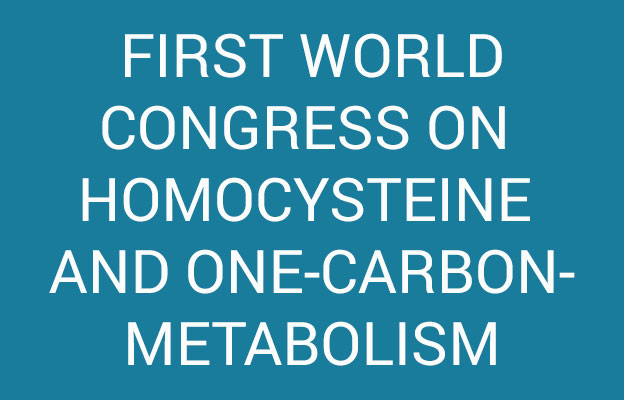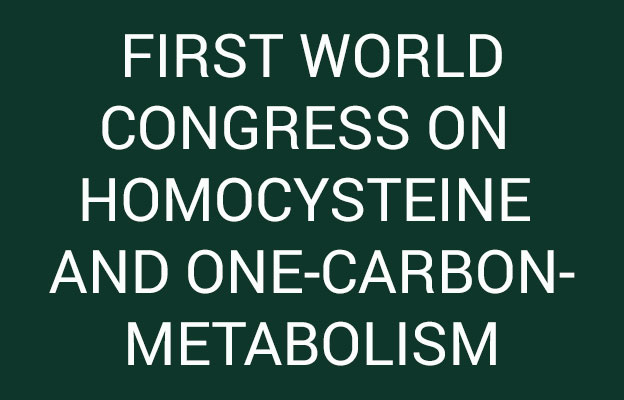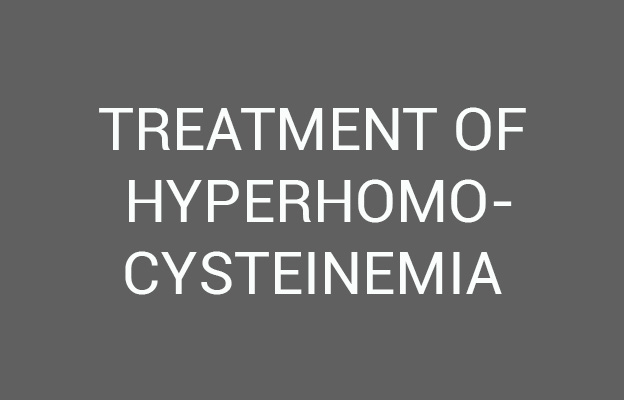Project management for phase II-IV studies
Biostatistics
Regulatory affairs
Temporary secondment of our research personal
Packing and labelling of study materials
Severimed is a well organized and flexible Clinical Research Organization
and holder of various patents operating mainly in the following countries: Germany, The Netherlands, Belgium, South Africa and the USA
We have specialized expertise in infectious diseases (e.g. urinary tract infections, respiratory tract infections), metabolic and nutritional disorders, mental disorders, and cellular aging processes.
We use a network of trained clinical investigators and basic scientists and work with large laboratories with nationwide courier services.
By using remote data entry we manage large trials meeting the quality standards imposed by ICH, FDA and the EEC Good Clinical Practice Guidelines.
-
SERVICES
-
MONITORING
Our CRAs and CRMs have at least 3 years’ experience in clinical research. They are geographically well located to visit study sites as often as needed. They are fluent in German, Dutch and English. They include MDs, PhDs, or well-trained laboratory technicians who can, for example, assist with blood sampling. We can also work with other CRAs on a project basis.
-
INVESTIGATORS
We have a network of general practitioners, internists, cardiologists, nephrologists, urologists, pulmonary specialists, geriatricians, microbiologists, and others at our disposal. They are experienced investigators familiar with GCP, ICH, and related guidelines. Their experience includes antibiotic trials, metabolic and nutritional disorders, mental disorders, and disorders of aging. Some of our work is patented
-
LABORATORIES
The benefits of using centralized laboratory procedures are indisputable. Therefore we have access to a network of qualified laboratories with well-organized courier services in each of the countries we operate in. For example, samples can be sent from any site in Germany, Belgium and The Netherlands to the central laboratory in less than 24 hours, and results are returned quickly. Specialized testing for parameters such as methylmalonic acid, homocysteine, cystathionine, and 2-methyl-citric acid is also available.
-
DATA MANAGEMENT
We use automated centralized data processing measures to obtain timely and efficient results, reduce errors, and minimize protocol violations. We will synchronize our procedures and our data formats to make them compatible with those of our clients.
-
MEDICAL WRITING
Study protocol
Case report form design
Patient information
Patient informed consent
Medical data review
Medical coding
Adverse event reporting
Case narratives
Safety reports
Clinical study report
-
RESEARCH STAFF
Our company was founded in 1990, the research staff consists of people with an average of 6 years or more experience in clinical research: They have worked on more than 30 different projects, some of these are listed here and results are published in top international medical journals
-
SOPs
Our SOPs are based on the experience of our research staff and conform to relevant national guidelines and laws such as: The Declaration of Helsinki; Note for guidance of the CPMP working party on efficacy of Medicinal Products; Good Clinical Practice (GCP) for Trials on Medicinal Products in the EEC (III/3976/88-EN); ICH-Guidelines §§ 40,41 AMG;
General Administration SOP on SOPs: Preparing, Maintaining & Training Responsibilities of the Research Team Training and Education; Study Start-Up Assessing Project Feasibility; Prestudy Site Visit Investigator and Site Initiation; Meetings Project Start-Up Project Management; Site-Sponsor/CRO Communications; Interactions with the Institutional Review Board Regulatory Files and Subject Records Sponsor/CRO; Subject Management Subject Recruitment and Screening Informed Consent; Development and Implementation Subject Management; While on Study Adverse Event Reporting; Specimen Collection and Hospital/Central Laboratory Procedures; Data Management; Management of Electronic Records and Signatures Quality Assurance Audits
About Us
Due to our centralized project management, we are able to offer our customers nearly every service for clinical research. Our comprehensive range of services reaches from general medical advice, to planning and implementation of national and international clinical trials in phases II-IV, to publications and presentations of study results, to drafting the relevant registration documents for national authorities.
The focus of our work is infectious diseases (e.g. urinary tract infections, respiratory tract infections), metabolic and nutritional disorders, mental disorders, and cellular aging processes.
Über uns
Aufgrund unseres zentralisierten Projektmanagements können wir für unsere Kunden nahezu jede Dienstleitung im Bereich der klinischen Forschung anbieten. Unser umfassendes Serviceangebot reicht von einer generellen medizinischen Beratung, über die Planung und Durchführung von nationalen und internationalen klinischen Studien der Phasen (II-IV) bis hin zur Publikation und Präsentation der Studienergebnisse oder auch Erstellung der entsprechenden Zulassungsunterlagen für nationale Behörden. Fokus unserer Arbeit liegt auf Zellalterung und den damit einhergehenden Erkrankungen.
Our Publications (selection)

Effects of vitamin B12, folate, and vitamin B6 supplements in elderly people with normal serum vitamin concentrations.
In a prospective, multicentre, double-blind controlled study, the effect of an intramuscular vitamin supplement containing 1 mg vitamin B12, 1.1 mg folate, and 5 mg vitamin B6 on serum concentrations of methylmalonic acid (MMA), homocysteine (HCYS), 2-methylcitric acid (2-MCA), and cystathionine (CYSTA) was compared with that of placebo in 175 elderly subjects living at home and 110 in hospital. Vitamin supplement and placebo were administered eight times over a 3-week period. Vitamin supplement but not placebo significantly reduced all four metabolite concentrations at the end of the study in both study groups. The maximum effects of treatment were usually seen within 5-12 days. Initially elevated metabolite concentrations returned to normal in a higher proportion of the vitamin than of the placebo group: 92% vs 20% for HYCS; 82% vs 20% for MMA; 62% vs 25% for 2-MCA; and 42% vs 25% for CYSTA. The response rate to vitamin supplements supports the notion that metabolic evidence of vitamin deficiency is common in the elderly, even in the presence of normal serum vitamin levels. Metabolite assays permit identification of elderly subjects who may benefit from vitamin supplements.
Author: Naurath HJ, Joosten E, Riezler R, Stabler S P, Allen R H, Lindenbaum J .
Lancet 1995; 346: 85-89
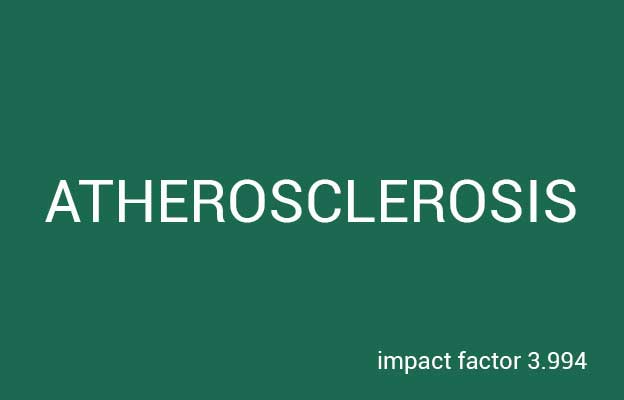
Homocysteine induced arteriosclerosis-like alterations of the aorta in normotensive and hypertensive rats following application of high doses of methionine.
Following oral administration of methionine in high doses to normotensive (NR) and spontaneously hypertensive (SHR) rats, its degradation product, homocysteine (HC), which is markedly elevated in serum, exerts an angiotoxic action directed to the aorta. This is accompanied by considerable loss of endothelium and degeneration, partly with dissolution of the media cells with formation of characteristic processes of the degenerating mitochondria, and by elevated HC and cystathion (CT) values in the aortic wall. At the arterial vessels of other organs similar alterations did not occur. There are quantitative differences between NR and SHR. In SHR, serum shows higher HC and CT concentrations than in NR, and the methionine-related aortic alterations are considerably more pronounced and develop earlier, with the additional formation of connective tissue. Here, a certain dependence on the methionine dose is noted, in contrast to NR, for which the magnitude of the reaction appears to be more related to the length of time of methionine application. Additional administration of atherogenic substances (cholestane-3 beta, 5 alpha, 6 beta-triol, cholesterol, angiotensin II, cholic acid with methylthiouracil) in SHR causes an exacerbation of the methionine-related aortic alterations. Only cholestane-triol has the same effect on the aortic wall in NR and SHR, with more accentuation in SHR. Cholestane-triol has, in NR as well as in SHR, a high coincidence with methionine-induced morphological reactions including the formation of mitochondrial processes. Simultaneous application of these two substances did not cause a potentiation of the effect. High doses of cholesterol bring about aortic alterations in SHR but not in NR. Thus, in addition to the disorder of fat and carbohydrate metabolism, disturbed protein metabolism is of decisive importance as a risk factor for coronary and other vascular diseases.
Matthias D, Becker CH, Riezler R, Kindling PH.
Atherosclerosis. 1996 May;122(2):201-16.
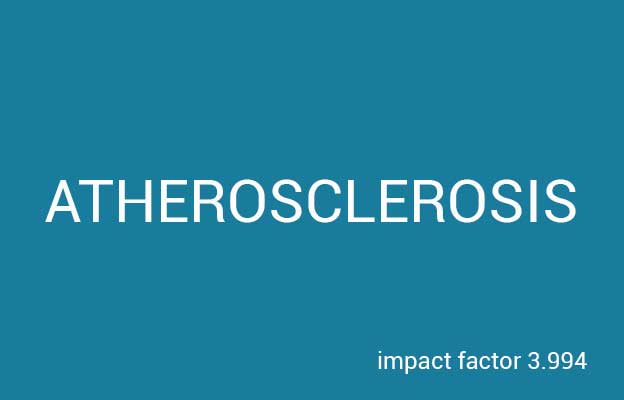
Decrease of carotid intima-media thickness in patients at risk to cerebral ischemia after supplementation with folic acid, Vitamins B6 and B12.
OBJECTIVE:
Hyperhomocysteinemia is associated with atherosclerotic risk. Although vitamins can lower homocysteine (Hcy), information about effects on atherosclerosis is scarce.
METHODS:
We used carotid intima-media thickness (IMT) as an accepted marker of atherosclerotic changes. Fifty patients (60 +/- 8 years) with IMT> or =1 mm were included. In a double blind, randomized trial they received daily 2.5 mg folic acid, 25 mg Vitamin B6, and 0.5mg Vitamin B12 or placebo for 1 year.
RESULTS:
In the treatment group, Hcy decreased from 10.50 +/- 3.93 to 6.56 +/- 1.53 micromol/l (P < 0.0001), whereas it remained unchanged in the placebo group (10.76 +/- 2.36 versus 10.45+/-3.30 micromol/l). IMT decreased from 1.50 +/- 0.44 to 1.42 +/- 0.48 mm (P = 0.034) in the treatment group, whereas it increased from 1.47 +/- 0.57 to 1.54 +/- 0.71 mm in the placebo group. The mean individual changes of IMT between both groups differed significantly (-0.08 +/- 0.17 versus 0.07 +/- 0.25 mm, P = 0.019). Multiple regression analysis revealed that the observed effect on IMT depended only on medication.
CONCLUSIONS:
Vitamin supplementation significantly reduces IMT in patients at risk. This effect is independent of Hcy concentration.
Author: Till U, Pohl P, Jentsch A, Riezler R, et all .
Atherosclerosis 2005; 181: 131-135

Metabolic evidence that deficiencies of vitamin B-12 (cobalamin), folate, and vitamin B-6 occur commonly in elderly people.
Measurements of the serum concentrations of the metabolites homocysteine, cystathionine, methylmalonic acid, and 2-methylcitric acid, which accumulates when vitamin B-12-, folate-, and vitamin B-6-dependent enzymatic reactions are impaired, should provide a better indication of intracellular deficiency of these vitamins. We measured the serum concentration of these vitamins and the four metabolites in 99 healthy young people, 64 healthy elderly subjects, and 286 elderly hospitalized patients. A low serum vitamin B-12 concentration was found in 6% and 5%, low folate in 5% and 19%, and low vitamin B-6 in 9% and 51%, and one or more metabolites were elevated in 63% and 83% of healthy elderly subjects and elderly hospitalized patients, respectively. These results strongly suggest that the prevalence of tissue deficiencies of vitamin B-12, folate, and vitamin B-6 as demonstrated by the elevated metabolite concentrations is substantially higher than that estimated by measuring concentrations of the vitamins.
Metabolic evidence that deficiencies of vitamin B-12 (cobalamin), folate, and vitamin B-6 occur commonly in elderly people.
Joosten E, van den Berg A, Riezler R, Naurath HJ, Lindenbaum J, Stabler SP, Allen RH.
Am J Clin Nutr. 1993 Oct;58(4):468-76.
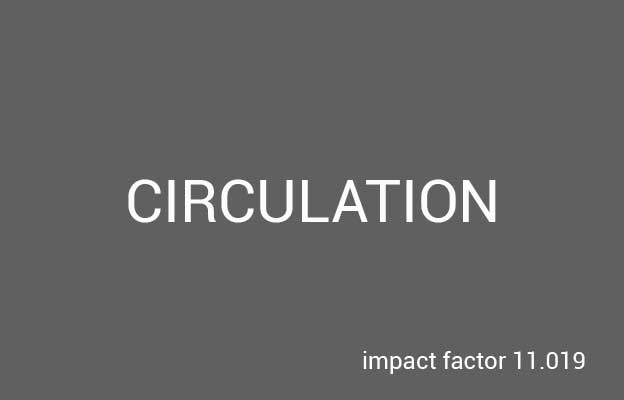
Acetylcysteine reduces plasma homocysteine concentration and improves pulse pressure and endothelial function in patients with end-stage renal failure.
BACKGROUND:
Increased oxidative stress, elevated plasma homocysteine concentration, increased pulse pressure, and impaired endothelial function constitute risk factors for increased mortality in patients with end-stage renal failure.
METHODS AND RESULTS:
We investigated the metabolic and hemodynamic effects of intravenous administration of acetylcysteine, a thiol-containing antioxidant, during a hemodialysis session in a prospective, randomized, placebo-controlled crossover study in 20 patients with end-stage renal failure. Under control conditions, a hemodialysis session reduced plasma homocysteine concentration to 58+/-22% predialysis (mean+/-SD), whereas in the presence of acetylcysteine, the plasma homocysteine concentration was significantly more reduced to 12+/-7% predialysis (P<0.01). The reduction of plasma homocysteine concentration was significantly correlated with a reduction of pulse pressure. A 10% decrease in plasma homocysteine concentration was associated with a decrease of pulse pressure by 2.5 mm Hg. Analysis of the second derivative of photoplethysmogram waveform showed changes of arterial wave reflectance during hemodialysis in the presence of acetylcysteine, indicating improved endothelial function.
CONCLUSIONS:
Acetylcysteine-dependent increase of homocysteine removal during a hemodialysis session improves plasma homocysteine concentration, pulse pressure, and endothelial function in patients with end-stage renal failure.
Acetylcysteine reduces plasma homocysteine concentration and improves pulse pressure and endothelial function in patients with end-stage renal failure.
Scholze A, Rinder C, Beige J, Riezler R, Zidek W, Tepel M.
Circulation. 2004 Jan 27;109(3):369-74
Comment in
- Renal disease, homocysteine, and cardiovascular complications. [Circulation. 2004]

Long-term effects of vitamin B(12), folate, and vitamin B(6) supplements in elderly people with normal serum vitamin B(12) concentrations.
BACKGROUND:
In the elderly, deficiencies of folate, cobalamin (vitamin B(12)) and pyridoxal phosphate (vitamin B(6)) are common. The metabolites homocysteine, methylmalonic acid, 2-methylcitric acid and cystathionine have been reported to be sensitive markers of these vitamin deficiencies.
OBJECTIVE:
The long-term (269 days) effect of an intramuscular vitamin supplement containing 1 mg vitamin B(12), 1.1 mg folate, and 5 mg vitamin B(6) on serum concentrations of homocysteine (tHcy), methylmalonic acid (MMA), 2-methylcitric acid (2-MCA), and cystathionine (Cysta) was studied in 49 elderly subjects with normal levels of vitamin B(12).
METHODS:
Vitamin supplement was administered 8 times over a 21-day period, metabolite concentrations were measured until day 269 (e.g. 248 days after the end of vitamin supplementation).
RESULTS:
From day 0 to 21, the serum levels of the 3 vitamins increased significantly, after cessation of supplementation the levels returned to baseline within the follow-up period. The MMA, 2-MCA and tHcy levels decreased during the treatment period significantly and did not reach baseline values within the 248-day period. Cysta levels did not differ significantly from baseline, either during or after treatment.
CONCLUSION:
MMA and 2-MCA levels rather reflect the availability of vitamins, especially cobalamin, than the actual serum levels. Since deficiencies of folate, cobalamin and pyridoxal phosphate in the elderly may cause hyerhomocysteinemia and hence may have unfavorable effects on mental performance, determination of MMA and 2-MCA levels in elderly patients with mental disturbances may be a cost-effective measure to improve or maintain mental performance.
Long-term effects of vitamin B(12), folate, and vitamin B(6) supplements in elderly people with normal serum vitamin B(12) concentrations.
Henning BF, Tepel M, Riezler R, Naurath HJ.
Gerontology. 2001 Jan-Feb;47(1):30-5.
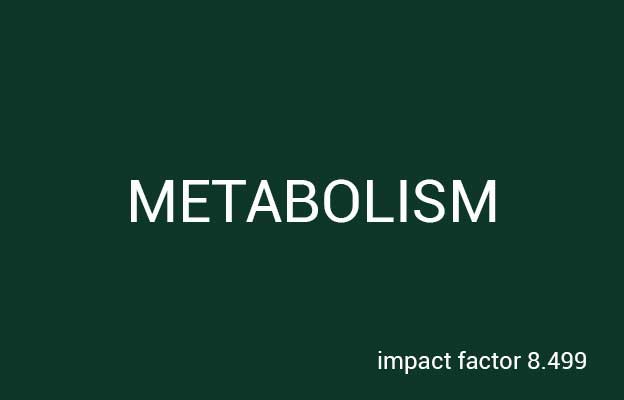
Decrease of elevated N,N-dimethylglycine and N-methylglycine in human immunodeficiency virus infection during short-term highly active antiretroviral therapy.
This study investigates fasting serum levels of methionine and related metabolites, vitamin B6, and folate during highly active antiretroviral therapy in therapy-naive human immunodeficiency virus (HIV)-1-infected outpatients. The research design consisted of before and during therapy measurements with a median treatment period of 100 days (range, 50 to 188) in frozen samples. The subjects included 17 consecutive HIV-1-infected outpatients (15 men and 2 women; 25 to 65-years-old). Controls were 42 healthy individuals (28 men and 14 women; 24- to 82-years-old) without serologic evidence of HIV and/or hepatitis C infection and normal clinical chemistry. Subjects received treatment with the reverse transcriptase inhibitors, azidothymidine (AZT) or stavudine (D4T) plus lamivudine (3TC) and either the protease inhibitors, indinavir (IND), nelfinavir (NELF), ritonavir (RITV), or saquinavir (SAQ) at the standard dosage. Serum concentrations of methionine, total homocysteine (tHcy), cystathionine (CYSTA), N,N-dimethylglycine (DMG), N-methylglycine (MG), methylmalonic acid (MMA), and total cysteine, as well as vitamin B6, folate, and soluble tumor necrosis factor receptor p75 were taken at baseline and during highly active antiretroviral therapy. Baseline, serum tHcy, MMA, CYSTA, vitamin B6 concentrations were not significantly different from healthy controls. There was, however, a trend towards lower folate serum concentrations at baseline in HIV-infected patients as compared with healthy controls (P =.06). There were no significant correlations between tHcy and vitamin B6, folate, or MMA. Elevated baseline levels of DMG and MG decreased significantly during antiretroviral therapy (P =.0019 and.04, respectively), whereas no significant changes in serum concentrations of CYSTA, MMA, or methionine were detected. tHcy increased in 12 of 17 patients (P =.09). HIV-infected patients displayed significant alterations (elevated DMG and MG serum concentrations) in metabolite levels of the betaine pathway in methionine metabolism, which might be positively influenced by newly initiated antiretroviral combination therapy.
Look MP, Riezler R, Berthold HK, Stabler SP,
Schliefer K, Allen RH, Sauerbruch T, Rockstroh JK.
Metabolism. 2001 Nov;50(11):1275-81
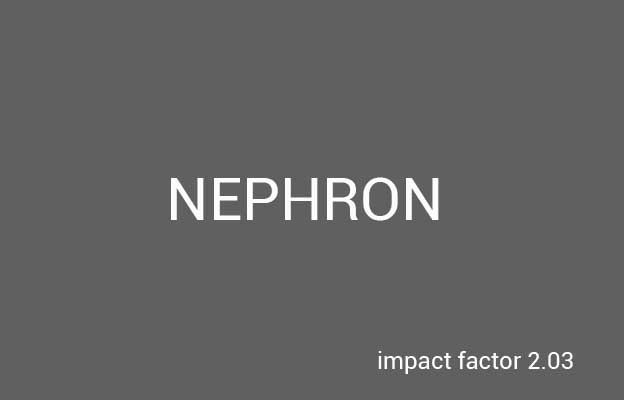
Evidence of altered homocysteine metabolism in chronic renal failure.
The fasting serum concentrations of total homocysteine and metabolites of transsulfuration (cystathionine, cysteine, methylmalonic acid, 2-methylcitric acid) and remethylation (methionine) were determined by gas chromatography-mass spectrometry in 40 nondialyzed patients with chronic renal disease and in 50 patients with end-stage renal disease requiring chronic maintenance hemodialysis. The nondialyzed patients and 28 of the dialysis patients did not receive additional vitamin supplementations. Twenty-two of the dialysis patients received daily oral vitamin preparations containing 10 mg pyridoxine (vitamin B(6)), 6 microg cyanocobalamin (vitamin B(12)), and 1 mg folic acid. In the nondialyzed patients, linear regression analysis showed positive correlations between serum concentrations of creatinine and total homocysteine (r = 0.68, p < 0.0001), cystathionine (r = 0.73, p < 0. 0001), methylmalonic acid (r = 0.77, p < 0.0001), and 2-methylcitric acid (r = 0.81, p < 0.0001). Serum homocysteine was positively correlated with serum concentrations of cystathionine (r = 0.59, p < 0.0001), cysteine (r = 0.69, p = 0.004), methylmalonic acid (r = 0. 64, p = 0.0001), and 2-methylcitric acid (r = 0.64, p < 0.0001). There was no significant correlation between serum concentrations of homocysteine and methionine (r = -0.14, p = 0.63). In the hemodialysis patients receiving oral vitamin supplementation, serum homocysteine and cystathionine concentrations were significantly lower than in hemodialysis patients not receiving vitamins (homocysteine 21.8 +/- 1.1 vs. 33.2 +/- 3.7 micromol/l, p = 0.0004; cystathionine 2,075.9 +/- 387.1 vs. 3,171.3 +/- 680.2 nmol/l, p = 0. 02; mean +/- SEM). In summary, our results show increased intermediate products of the transsulfuration pathway, but no increase in remethylation of homocysteine in chronic renal disease, including end-stage renal disease requiring chronic maintenance dialysis.
Evidence of altered homocysteine metabolism in chronic renal failure.
Henning BF, Riezler R, Tepel M, Langer K, Raidt H, Graefe U, Zidek W.
Nephron. 1999;83(4):314-22
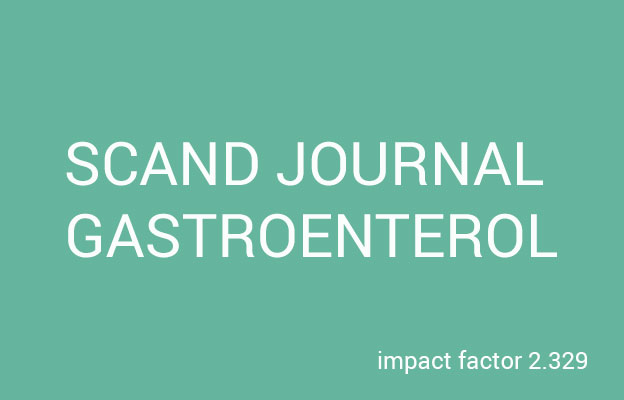
Is the increase in serum cystathionine levels in patients with liver cirrhosis a consequence of impaired homocysteine transsulfuration at the level of gamma-cystathionase?
It has been suggested that the major metabolic block in the methionine catabolic pathway in cirrhotics exists at the level of the enzyme S-adenosylmethionine synthetase because in previous studies using conventional amino-acid analyzers, no intermediates of transmethylation/transsulfuration were found to accumulate in plasma downstream of S-adenosylmethionine synthesis. We therefore measured serum concentration intermediates of methionine transmethylation/transsulfuration using an improved gas chromatography/mass spectrometry technique.
METHODS:
Serum concentrations of methionine, homocysteine, cystathionine, N,N-dimethylglycine, N-methylglycine, methylmalonic acid, 2-methylcitric acid and alpha-aminobutyric acid were determined by gas chromatography/mass spectrometry in 108 consecutive patients with liver cirrhosis at Child stages A (mild cirrhosis, n = 27) and B/C (severe cirrhosis, n = 81), 18 outpatients with non-cirrhotic liver disease, and 55 healthy individuals.
RESULTS:
Serum levels of methionine, N,N-dimethylglycine, N-methylglycine, cystathionine, and homocysteine were significantly higher in patients at Child stages B/C compared with those of healthy controls (P < 0.01), and they were also significantly higher than in patients with non-cirrhotic liver disease (P < 0.01 and P < 0.05 for homocysteine, respectively). They also correlated with the Child-Pugh score (P < 0.01). Homocysteine, cystathionine, N,N-dimethylglycine, N-methylglycine, methylmalonic acid, and 2-methylcitric acid correlated with serum creatinine. The mean cystathionine concentration was significantly higher in patients with creatinine > or = 1.4 mg/dl than in patients with normal creatinine values (P < 0.01). However, the differences between cirrhotics and healthy controls were still significant after correcting for creatinine.
CONCLUSIONS:
Our data provides indirect evidence for two hitherto unrecognized alterations of methionine metabolism in cirrhotics, i.e. impairment of the transsulfuration of homocysteine at the level of cystathionine degradation and a shift in remethylation of homocysteine towards the betaine-homocysteine-methyltransferase reaction.
Look MP, Riezler R, Reichel C, Brensing KA, Rockstroh JK, Stabler SP, Spengler U, Berthold HK, Sauerbruch T.
Scand J Gastroenterol. 2000 Aug;35(8):866-72

Are different reference intervals for methylmalonic acid and total homocysteine necessary in elderly people?
To determine whether age-adjusted reference intervals for methymalonic acid (MMA) and total homocysteine (tHcy) are necessary, data from 2 previous studies were used. First, the reference intervals for serum vitamin B12, folate, methylmalonic acid and total homocysteine were determined in 2 reference sample groups: 99 healthy adults and 64 selected healthy elderly subjects living at home. Secondly, health-related reference limits were estimated in 143 elderly subjects after supplementing the nutritional status with a combination of vitamin B12, vitamin B6 and folate during a 3-wk period. In the latter group, the adjusted reference intervals for MMA (46-288 nmol/L) as well as for tHcy (5-13.6 mumol/L) are different with considerably lower upper reference limits than that estimated with the original reference values (72-476 nmol/L for MMA; 6.8-21 mumol/L for tHcy) in the elderly subjects. Our data suggest that the MMA and tHcy levels increase with age. Moreover, the upper reference limit for MMA and tHcy, conventionally defined as the mean +2 SD in healthy elderly reference sample group without supplementing the nutritional status, might result in falsely high values due to a high prevalence of an inadequate vitamin B12, vitamin B6 and folate status.
Joosten E, Lesaffre E, Riezler R.
Eur J Haematol. 1996 Sep;57(3):222-6.

Hyperhomocysteinemia and the risk for vascular disease in hemodialysis patients.
The objective of this study was to examine if hyperhomocysteinemia is associated with occlusive vascular disease in hemodialysis patients. The study design included risk factor analysis and determination of serum homocysteine in hemodialysis patients. Fifty chronic uremic patients on regular hemodialysis treatment were studied. Twenty-four patients had coronary, cerebral, or peripheral signs of occlusive vascular disease. Cerebral vascular disease was diagnosed by computed tomography, arterial angiography, or Doppler sonography of the carotid and vertebral arteries. Coronary vascular disease was diagnosed by documented history of myocardial infarction or by coronary angiography. The diagnosis of peripheral vascular disease was established by angiography of the lower limb arteries. In all control patients, Doppler sonography of the carotid, vertebral, and lower limb arteries and thallium-201 exercise imaging were without pathologic results. Measurements included blood pressure, body mass index, smoking behavior, serum homocysteine (measured by gas chromatography/mass spectrometry), serum total, low-density lipoprotein, and high-density lipoprotein cholesterol, lipoprotein (a), triglycerides, and plasma fibrinogen. In a stepwise multiple logistic regression analysis, high serum homocysteine was significantly associated with occlusive arterial disease (R = 0.23; P = 0.031). Furthermore, hypertension (R = 0.18; P = 0.058), but not serum total, low-density lipoprotein, and high-density lipoprotein cholesterol, lipoprotein (a), triglycerides, diabetes mellitus, body mass index, plasma fibrinogen, and smoking behavior, was significantly associated with atherosclerosis. Our results support the hypothesis that hyperhomocysteinemia is an independent risk factor for vascular disease in hemodialysis patients.
Bachmann J, Tepel M, Raidt H, Riezler R, Graefe U, Langer K, Zidek W.
J Am Soc Nephrol. 1995 Jul;6(1):121-5
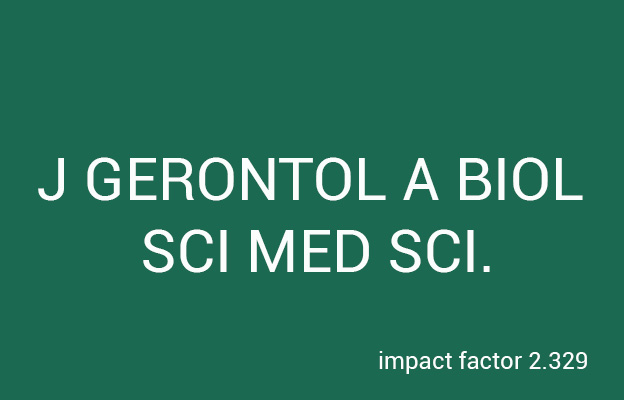
Is metabolic evidence for vitamin B-12 and folate deficiency more frequent in elderly patients with Alzheimer's disease?
BACKGROUND:
It is still unclear whether there is an association between Alzheimer's disease and vitamin B-12 or folate deficiency. This study was designed to investigate whether patients with Alzheimer's disease are particularly prone to metabolically significant cobalamin or folate deficiency as compared to nondemented hospitalized controls and healthy elderly controls living at home.
METHODS:
Evaluation for the diagnosis of Alzheimer's disease, routine laboratory tests, serum folate and vitamin B-12, serum methylmalonic acid (MMA), total homocysteine (tHcy), and radiological tests was performed in 52 patients with Alzheimer's disease (AD), 50 nondemented hospitalized controls, and 49 healthy elderly subjects living at home.
RESULTS:
Serum vitamin B-12 and folate levels are comparable between patients with AD, hospitalized control patients, and subjects living at home. Patients with AD have the highest serum MMA and tHcy levels. The MMA levels of patients with AD and hospitalized controls are not different, but the mean tHcy level is significantly higher in patients with AD as compared to nondemented patients or subjects living at home.
CONCLUSION:
The interpretation of the vitamin B-12 and folate status in patients with AD depends largely on the methodology (i.e., serum vitamin vs metabolite levels) and the selection of the control group. Although patients with AD have the highest tHcy and MMA levels, metabolically significant vitamin B-12 and folate deficiency is also a substantial problem in nondemented elderly patients.
Joosten E, Lesaffre E, Riezler R, Ghekiere V, Dereymaeker L, Pelemans W, Dejaeger E.
J Gerontol A Biol Sci Med Sci. 1997 Mar;52(2):M76-9

Variability of post-methionine load plasma homocysteine assays.
BACKGROUND:
Numerous variations of the methionine load test are frequently used as dynamic function tests to assess homocysteine metabolism. Lack of standardization impedes inter-laboratory comparisons. Criteria based on biological variation are suggested to standardize the methionine load test.
METHODS:
Weekly methionine load tests (n=5) with blood sampling at 0, 4, 6 and 8 h were performed on 15 young men. For both basal and post-methionine load homocysteine measurements, total variance (sigma(S)(2)), within-subject variance (sigma(I)(2)), between-subject variance (sigma(G)(2)) and analytical variance (sigma(A)(2)) were calculated from an appropriate analysis of variance (ANOVA).
RESULTS:
Plasma homocysteine concentrations measured 6 h after methionine loading had analytical, within-subject and between-subject coefficients of variation of 5.2%, 17.5% and 9.7%, respectively. Measurements at 4 h had a higher within-subject coefficient of variation. Adjustment of post-methionine load homocysteine concentrations for basal levels resulted in considerable increases of all the measures of variation.
CONCLUSIONS:
Adjustment of post-methionine load plasma homocysteine concentrations for basal levels does not improve the interpretation of changes in serial results due to the higher analytical and biological variance of adjusted concentrations. It is suggested that the methionine load test is standardized to a single, unadjusted homocysteine measurement at 6 h.
Ubbink JB, Becker PJ, Delport R, Bester M, Riezler R, Vermaak WJ.
Clin Chim Acta. 2003 Apr;330(1-2):111-9.

Homocyst(e)ine metabolism in hemodialysis patients treated with vitamins B6, B12 and folate.
Hyperhomocyst(e)inemia is commonly accepted as an independent atherosclerotic risk factor. In most hemodialysis patients, serum homocyst(e)ine is markedly elevated and may contribute to premature atherosclerosis in these patients. Whereas the beneficial effect of folate supplementation on serum homocyst(e)ine has been extensively studied, there are less detailed studies on the effects of cobalamin and pyridoxal phosphate alone, or in combination with folate. We examined the effect of a four-week course of intravenous treatment with folate (1.1 mg), cobalamin (1.0 mg), and pyridoxal phosphate (5.0 mg), administered once (group 1), twice (group 2) or thrice (group 3) weekly in 33 hemodialysis patients divided in three groups of 11 patients. All patients were followed for a further four weeks after treatment was stopped. Serum homocyst(e)ine, cobalamin, folate and pyridoxal phosphate, as well as the metabolites of homocyst(e)ine, methylmalonate, 2-methylcitrate and cystathionine, were determined before, during and after treatment. Baseline serum homocyst(e)ine correlated significantly with serum folate (P=0.0149), cobalamin (P=0.0047) and pyridoxal phosphate (P=0.0408). Correlations independent from the other metabolites or vitamins were found for methylmalonate (P=0.003) and folate (P=0.029). All regimens increased serum cobalamin significantly (in group 1 from 444 +/- 215 to 17,303 +/- 11,989 pg/ml, P<0.01; in group 2 from 542 +/- 633 to 44,896 +/- 15,772 pg/ml, P<0.001; in group 3 from 548 +/- 394 to 77,961 +/- 31,546 pg/ml, P<0.001), but did not increase any of the other vitamin levels. Serum homocyst(e)ine was lowered significantly by 39.8% +/- 31.9% (P<0.05) with two and by 30.1% +/- 26.9% (P<0.05) with three vitamin dosages weekly, but not with one dosage weekly. Since methylmalonate is known to be a sensitive marker of cobalamin deficiency, the data support an important influence of cobalamin levels on baseline homocyst(e)ine levels. Increasing cobalamin levels and additional treatment with folate and pyridoxal phosphate 156 may decrease serum homocyst(e)ine in the same way as high doses of folate alone.
Henning BF, Zidek W, Riezler R, Graefe U, Tepel M.
Res Exp Med 2001 Mar;200(3):155-68.
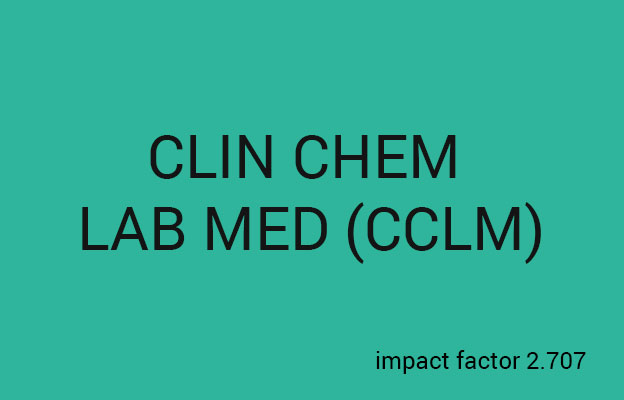
Does a single vitamin B-supplementation induce functional vitamin B-deficiency?
In a pilot study we measured the effect of three different combinations of the vitamins B6, folate and B12 on the serum concentrations of homocysteine, cystathionine and methylmalonic acid in five healthy young men without hyperhomocysteinemia. The results indicate that there are still undescribed interactions between vitamin B6 and folate, suggesting that these two vitamins should be given together to avoid depletion of the one not given. With regard to the well known metabolic pathways of methionine and cysteine, this confirms the hypothesis that a combined supplementation with the vitamins B6 and folate (and B12) is superior to folate alone in order to lower homocysteine.
Clin Chem Lab Med. (CCLM) 2001 Aug;39(8):768-71.

Parallel decrease in neurotoxin quinolinic acid and soluble tumor necrosis factor receptor p75 in serum during highly active antiretroviral therapy of HIV type 1 disease.
The chronic immune activation state in HIV disease leads to increased activity of the rate-limiting tryptophan-kynurenine pathway enzyme indoleamine 2,3-dioxygenase (2,3-IDO), thereby increasing the formation of neurotoxic tryptophan metabolites such as kynurenine and quinolinic acid. We investigated whether highly active antiretroviral therapy (HAART) (median duration, 100 days; range, 50-188 days) lowers serum levels of these metabolites in HIV-infected individuals and if so, whether this was paralleled by changes in a surrogate marker for immune activation, i.e., soluble tumor necrosis factor receptor p75 (sTNFR p75) concentrations. Baseline quinolinic acid (848 nM, 95% CI 567-1130 vs. 303 nM, 95% CI 267.1-339.5) and kynurenine (4.1 microM, 95% CI 3.3-4.9 vs. 2.7 microM, 95% CI 2.4-2.9) concentrations as well as the mean kynurenine-to-tryptophan ratio (108.2, 95% CI 76.1-140.4 vs. 51.4, 95% CI 47.6-55.3) in 17 HIV-1-infected outpatients (7 with AIDS) were significantly higher than those in 55 healthy age-matched controls (p < 0.01), respectively. Serum quinolinic acid concentrations in 14 of 17 patients decreased (mean, -44.4%) during HAART in comparison with baseline (471.2 nM, 95% CI 288-654.3; p = 0. 022). Thirteen of these 14 patients also had decreases in sTNFR p75 concentrations. Overall, the mean sTNFR p75 concentration decreased by 36.3% (13.5 ng/ml, 95% CI 9.3-17.8 vs. 8.6 ng/ml, 95% CI 5.9-11. 4; p = 0.01, n = 17). Reduction in viral load through HAART and subsequent mitigation of the pathological immune activation state in HIV disease may have reduced 2,3-IDO over activation. This eventually led to a decrease in quinolinic acid formation. The parallel reduction of the immune activation marker sTNFR p75 supports this hypothesis.
Look MP, Altfeld M, Kreuzer KA, Riezler R,
Stabler SP, Allen RH, Sauerbruch T, Rockstroh JK.
AIDS Res Hum Retroviruses. 2000 Sep 1;16(13):1215-21.
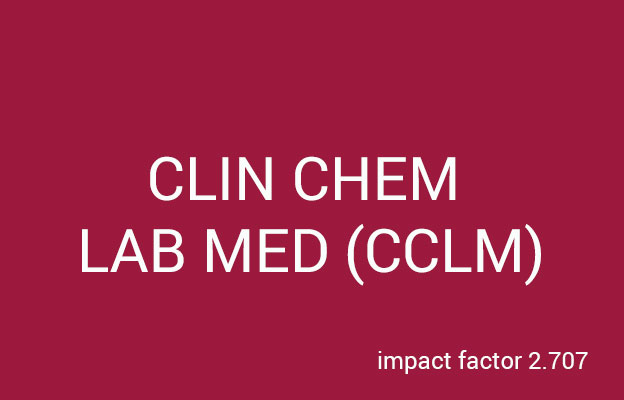
Comparison of three different plasma homocysteine assays with gas chromatography-mass spectrometry.
BACKGROUND:
Various methods are available to measure plasma total homocyst(e)ine (tHcy) concentrations, but whether plasma tHcy assays may be used interchangeably is not known.
METHODS:
Results from three different methods [HPLC with fluorescence detection, enzyme immunoassay (EIA), and fluorescence polarization immunoassay (FPIA)] to determine fasting (n = 163) and post-methionine load (n = 80) plasma tHcy concentrations were compared with those obtained by gas chromatography-mass spectrometry (GC-MS). Difference plots on non-transformed and log-transformed data were used to assess the agreement between HPLC and GC-MS, EIA and GC-MS, and FPIA and GC-MS.
RESULTS:
The closest agreement between methods was observed between GC-MS and FPIA for fasting tHcy concentrations, with 95% of the FPIA values between 19% above and 24% below the corresponding GC-MS results. Post-methionine load tHcy concentrations measured by EIA showed the least agreement with GC-MS, with 95% of values measured by EIA ranging between 52% above and 16% below the GC-MS values. With respect to GC-MS, the above-mentioned methods showed a negative bias for fasting tHcy concentrations, but a positive bias for both immunoassays for post-methionine load tHcy concentrations.
CONCLUSIONS:
The agreement among methods is insufficient to allow them to be used interchangeably. The intermethod differences emphasize the need for standardization of plasma tHcy assays.
Ubbink JB, Delport R, Riezler R, Vermaak WJ.
Clin Chem. 1999 May;45(5):670-5

Vitamin supplementation during weight reduction--favourable effect on homocysteine metabolism.
Moderately elevated homocysteine concentrations, reflecting deficiency of some nutritional factors required for homocysteine metabolism (folate, vitamin B-6, vitamin B-12) and/or less severe genetic defects, are common in the general population. Several studies have indicated the role of homocysteine as an independent risk factor for vascular disease. A pilot study published recently suggested that plasma homocysteine levels increase during weight reduction in slightly overweight, otherwise healthy subjects (group A). We examined a comparable group of 13 overweight subjects (group B) using a standardised caloric intake and defined vitamin supplementation (Medyn: folate 0.2 mg/ vitamin B-68.0 mg/ vitamin B-120.010 mg three times the day orally) to determine the effect of weight reduction on serum homocysteine levels and to compare the results with those of the pilot study. Mean body weight declined from 87.0 +/- 20.2 to 84.2 +/- 20.1 kg (P < 0.05) in group A and 85.7 +/- 11.3 to 82.5 +/- 9.9 kg (P = 0.049) in group B. Serum homocysteine levels rose from 7.9 +/- 2.0 to 8.7 +/- 2.3 mumol/l (P < 0.0001) in group A and decreased from 8.19 +/- 1.73 to 7.35 +/- 0.88 mumol/l (P = 0.0022) in group B. No correlation was found between the changes in body weight and in homocysteine levels (r = 0.02 in group A, r = 0.18 in group B). Additionally, no correlation was found between serum folate levels and changes in homocysteine levels (r = 0.03 in group A, r = 0.09 in group B). The results suggest that an adequate oral vitamin-supplementation protects against increased homocysteine production during weight reduction.
Henning BF, Tepel M, Riezler R, Gillessen A, Doberauer C.
Res Exp Med (Berl). 1998 Jul;198(1):37-42

Bactericidal effect of propolis in vitro against agents causing upper respiratory tract infections.
Propolis is a natural product of bees which exhibits an antimicrobial effect. In the study the existence of a bactericidal effect against several strains isolated from patients with infections in their upper respiratory tracts is demonstrated. In light of the use of propolis as a therapeutic agent in natural medicine for common colds and inflammatory processes this effect is discussed.
Focht J, Hansen SH, Nielsen JV, van den Berg-Segers A, Riezler R.
Arzneimittelforschung. 1993 Aug;43(8):921-3

The prevalence of hyperhomocysteinemia in thromboangiitis obliterans
Artikel in deutsch
Anmerkung zu Stammler et al Prävalenz der Hyperhomocysteinämie bei der Thrombangiitis obliterans DMW 1996; 46 : 1417-1423
Der Stand des Wissens wurde bei dieser Arbeit nicht berücksichtigt.
Ein Methioninbelastungstest wird, 1974 unseres Wissens nach zuerst publiziert, durchgeführt, um die Diagnose der heterozygoten Cystathionin ß-Synthetase (CBS) zu stellen. Sie gilt als gesichert wenn der 4-6 Stunden-Postload-Wert für Gesamt-Homocystein (tHcy) im Bereich >30 µmol/l und < 100 µmol/l liegt, bei Postload-Werten > 100 µmol/l muß an eine homozygote Homocysteinurie gedacht werden.
Therapie der Wahl ist bei der heterozygoten Form der Erkrankung 100 - 300 mg/d Vitamin B6 und ein Zusatz von 1-5 mg/d Folsäure, um keine Folsäure Verarmung durch ein Überangebot von B6 zu induzieren . Durch die hohe Gabe von B6 wird die Transulphurierung von Homocystein zu Cystein trotz Enzymdefektes wieder möglich. Bei nüchtern Homocysteinwerten > 13,9 µmol/l ist eine Kombinationstherapie aus B6, B12 und Folsäure das Mittel der Wahl .
Es wäre wichtig gewesen in der Diskussion diesen Sachverhalt so darzustellen und nicht den Methioninbelastungstest als neuen Ansatz zur Verbesserung der Sensitivität der Homocystein-Diagnostik vorzustellen.
Kritisch anzumerken ist zudem, daß bei den Abbildungen für der Homocystein-Grenzwert 13,9 µmol/l also der 2 SD-Wert gewählt wurde7, wohingegen die Punktwolke den Mittelwert 1SD darstellen.
Außerdem muß darauf hingewiesen werden, daß Vitamin-Serumspiegel der Vitamine B6, B12 und Folsäure nicht mit tHcy-Werten , oder den anderen Metaboliten Methylmalonsäure als Maß für intrazellulären Vitamin B12 Mangel, und Cystathion, als Maß für den intrazellulären B6 Mangel, korrelieren . Bei einem Patienten, mit hohen Homocysteinwerten und normalen B6, B12 und Folsäurewerten, sinken die tHcy-Werte unter Gabe der o.g. Vitamine4.
´
Dtsch Med Wochenschr. 1997 Aug 22;122(34-35):1062-3
R.Riezler

Kommentar zu HOPE2 und NORVIT
Zwei große Therapiestudien mit B-Vitaminen haben keinen Einfluß auf die Risiko-Reduktion von kardiovaskulären sekundär Ereignissen zeigen können. Gründe dafür waren falsche Fallzahlberechnungen, da nach Planung der Studien die Vitaminanreicherung der Grundnahrungsmittel stattfand, des Weiteren „merkwürdig“ gewählte Ein- und Ausschlusskriterien und ein interessanter Umgang mit Statistik. Eine Schlussfolgerung ist, dass zum jetzigen Zeitpunkt die Gabe von B-Vitaminen, ohne Vorliegen eines Vitaminmangels und ohne erhöhte Homocysteinspiegel, nicht zur Sekundärprävention von Herzinfarkt indiziert ist.
prevention and anti aging 2 (2006) 186–188 Riezler R

Ist Homocystein ein Prädiktor für Morbus Alzheimer?
Eine häufige Erkrankung in der älteren Bevölkerung ist die Demenz (1). Die zwei häufigsten Formen sind der M. Alzheimer (AD) und die vaskuläre Demenz (2).
Es ist mittlerweile allgemein bekannt, dass Methyl-Malonsäure (MMA) gesamt Homocysteine (tHcy) und Cystathionin (Cys), die besseren Indikatoren für einen intrazellulären Vitamin B12, Folsäure und Vitamin B6 Mangel sind, als die Vitamin-Serum-Spiegel dieser Vitamine. Ziel der hier vorgestellten prospektiven Studie war es fest zu stellen, ob im Vergleich zu Nicht-Dementen Krankenhaus-Patienten (NDH) und Gesunden Alten (HE) als Kontrollgruppe, die AD Patienten besonders unter einem Vitamin B-Mangel leiden.
anti aging for professionals 2 (2006) 54–57
Riezler R , Naurath HJ, Pütter K

Hyperhomocysteinämie: Pathogenität, Entstehung, Prophylaxe und Therapie
L-Homocystein gehört nicht zum Mischpool der zur Proteinbiosynthese notwendigen Amino-säuren, sondern wird ausschließlich im Zwischenstoffwechsel gebildet. Als zellgängige Verbin-dung erscheint sie auch im Blut und liegt dort in verschiedenen, ineinander überführbaren Formen vor, als freie Aminosäure, ringförmig als Thiolacton (als einzige schwefelhaltige Aminosäure), oxidiert als Homocystin, als gemischtes Disulfid mit Cystein und als Dipeptid aus Homocystein-Thiolacton und Homocystein(1). Über Disulfid- oder Peptidbindungen ist ein hoher Anteil des Homocysteins auch an Plasmaproteine und -lipoproteine gebunden:
Zur Bestimmung der Homocysteinkonzentration im Serum kommen Aminosäureanalysatoren, Hochdruckflüssigkeitschromatographie oder Gaschromatographie/Massenspektroskopie, zum Einsatz(2). Vorbehandlung des Serums mit Reduktionsmitteln oder Säure erlaubt auch die Erfassung des protein- oder lipoproteingebundenen Anteils. Aus ersten systematischen Untersuchungen an Probanden zwischen 20 und 40 Jahren ergab sich für das gesamte Homocystein im Serum ein Referenzwert von 9,45 4,45 µmol/l (Mittelwert : 2SD)(3). Aus den nachfolgend aufgeführten mechanistischen Untersuchungen und klinischen Studien zeigt sich aber, daß dieser Konzentrationsbereich nicht als indifferent anzusehen ist, sondern bereits pathophysiologische Auswirkungen haben kann
anti aging for professionals volume 1/2005
Riezler R

Homocysteinämie und Osteoporose
Osteoporose ist eine der häufigsten Erkrankungen des Alters. Die Angaben zur Prävalenz und Inzidenz sind schwankend. Die Prävalenz wird für Deutschland zwischen 4 und 8% der Gesamtbevölkerung angegeben.
Homozygote Homocysteinämiepatienten zeigen, neben mentaler Retardierung, prämaturen Thrombosen auch prämature Osteoporose. Da diese Patienten quasi im „Zeitraffer“ all die Erkrankungen durchlaufen, die wir gehäuft im Alter wiederfinden, drängt sich die Frage auf ob Homocystein aktiv an Osteoporose beteilgt ist, oder ob es sich hier nur um einen „harmlosen Zuschauer“ handelt, der eben im Alter akkumuliert.
